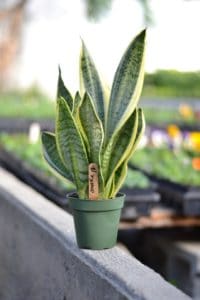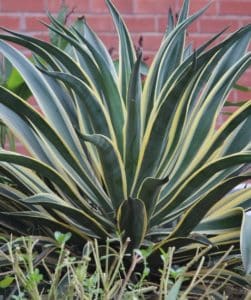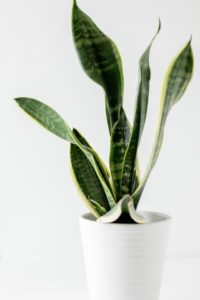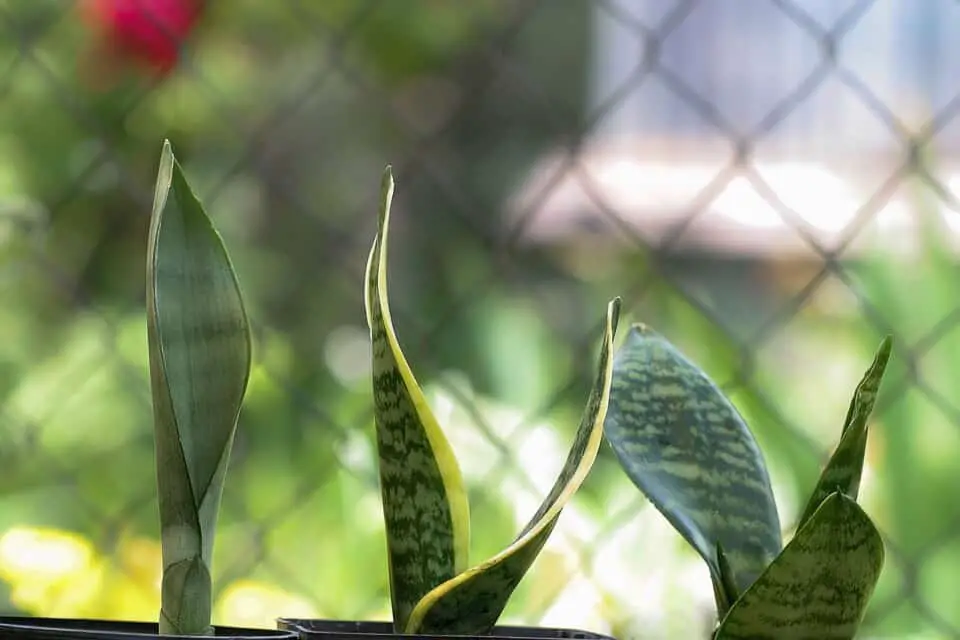Some links in the post are affiliate links and I get a commission from purchases made through some links found in the post.
When I first started growing my snake plant, I was surprised at its easy maintenance.
I have had other plants in the past that wilted at the first sign of neglect and did not want to go through this again. So, I was overjoyed at how little maintenance this plant needed for the spring and summer that followed.
Then winter started drawing near, and I could not help but wonder if this would change.
I started reading about what a snake plant needs in the winter and was happy that the journey would still be smooth.
And if you’re in the same shoes, hoping to get a quick answer to what your plant needs this winter, you have come to the right place. It’s all about the dos and don’ts which tie to its main needs.
Your plant can survive the winter without additional fertilizer and can even stay without water for a month! So, what does this mean?
To care for a snake plant over winter, you must alter some of the care you offer your plant regarding its watering, fertilization, positioning, and exposure to temperature and humidity.
Water once a month or so, avoid fertilizing, give it indirect sunlight and keep the temperature above 50°F.
Can you guess what you need to do in each case? Not to worry – in this guide, I will take you through what is acceptable and what could kill your plant (yes, that can also happen).
How to Care for a Snake Plant in the Winter
Plant parents know that plant needs change through the seasons. And the same holds for your snake plant.
While it will not need extra attention in the winter, you still need to make some adjustments to ensure you don’t kill it when the temperatures drop.
So, what must you change?
1) Your Watering Schedule
 The snake plant is a succulent that stores water in its leaves – it is native to dry regions where access to water is limited.
The snake plant is a succulent that stores water in its leaves – it is native to dry regions where access to water is limited.
Thus, as a rule of thumb, you should not overwater it. Else, the leaves absorb too much water, and you pave the way for root rot which kills your plant.
We have an article on how to save your snake plant from root rot to help you out.
And the leaves could also split on account of absorbing more water than is necessary. The plant could also show signs of sogginess, with mold showing on the soil surface and the roots appearing mushy.
In the early stages, overwatering exhibits in the form of yellowing leaves.
In most cases, the snake plant can even go a month or more without watering. But when you overwater it, the plant dies. It’s safe to assume that underwatering is the less harmful evil in this case.
So, how does watering change in the winter? Let’s start with what’s normal in the spring, summer, and autumn.
In these seasons, you must let the soil dry before watering it. And depending on the climate in your region, this could be every few days or even after a week.
The snake plant uses this water to facilitate its cellular activities and inevitable growth. But in the winter, the plant enters dormancy and thus stops growing. That means that the water you feed it will mostly remain in the soil, unabsorbed.
Thus, it is best to water the plant once a month and leave it be. And if you are unsure of if the plant needs water, you can always dig your fingers at least two inches into the soil. If it feels moist, allow the soil to dry more before watering it.
Some people like using moisture meters, to be sure – it’s worth looking into this if you have a history of overwatering your plants. You can even space the watering by six weeks, and the plant would not die.
Spacing out the watering is not enough. While your watering schedule may be suitable for the plant, some other factors could deter the success of your winter care routine. These include:
- A poor choice of potting mix: If the soil is not well-draining, it will retain water that could foster ideal conditions for root rot and pest infestation. The best potting mix for your snake plant comprises cactus soil and compost. You can look into other alternatives too.
- A poor draining pot or one with blocked drainage holes: The pot should allow the excess water to drain, leaving only the necessary amount in the pot. But if this is not the case, the soil becomes waterlogged, which is a recipe for disaster.
If all seems well with the pot, potting mix, and your watering schedule, you are all set for the winter.
2) Your Fertilization Schedule
We all enjoy healthy plants and are not shy to add fertilizer to their soils to enhance their growth. However, the snake plant is not too keen on fertilization and does well on potting mix alone.
But if you want to give it a boost, you can always use a balanced liquid slow release 10-10-10 fertilizer. Alternatively, you can use a diluted 20-20-20 fertilizer.
Should you keep fertilizing it in the winter? As we mentioned earlier, the snake plant goes into dormancy in the winter. That means that it’s no longer actively growing.
If you feed it at this time, the fertilizer remains in the soil and does not get absorbed. So, once the temperatures drop, stop feeding the plant and allow it to go dormant. You can then resume fertilizing it once the winter passes.
The best way to do so is by actively feeding it in the spring and summer when its growth is at its prime.
Then in the fall, cut back on feeding it by halving the inputs. That way, the plant can use up what’s left of the fertilizer before winter begins.
What’s the harm in fertilizing the snake plant in the winter? Besides the fact that the fertilizer will go to waste, the fertilizer can also burn the plant’s roots.
And this allows pests to invade the plant and cause even more destruction. Moreover, the leftover fertilizer encourages leggy growth. And while you may think that excess fertilizer can promote more growth, it can also stunt your plant.
What can you do if you have overfertilized your plant? The only way to save the plant is by getting rid of the excess inputs.
How? – By repotting the plant. To do this, you will need to remove the plant from its current pot and brush off the soil around the roots.
Proceed to rinse the roots under slow running water for about ten minutes to remove any input residue.
Then plant the snake plant in a fresh potting soil mix without any fertilizer. Water the soil and allow the excess water to drain.
You should then leave the plant and not add any fertilizer for at least a month. That will allow it enough time to recover from the effects of the excess input.
You can then adjust your fertilization schedule according to the seasons, as suggested earlier.
3) The Plant Placement
 Snake plants are highly adaptive plants. They do well in bright but indirect light. However, they can also adapt to partial or full sun.
Snake plants are highly adaptive plants. They do well in bright but indirect light. However, they can also adapt to partial or full sun.
They can even do well in dimly lit environments – they tend to adjust to the current conditions, making them relatively easy to handle. That means that you need not worry about any changes in lighting when winter starts.
But what about temperature and humidity? The snake plant prefers warm conditions and does best in temperatures between 70- and 90- degrees Fahrenheit.
However, it can tolerate temperatures as low as 50 degrees Fahrenheit. Anything below that is a catalyst for disaster. Moreover, this plant cannot withstand frost and will die when exposed to extreme temperatures.
What does this mean for winter care? All snake plants growing outdoors must be brought indoors before temperatures drop to 50 degrees Fahrenheit or less. Furthermore, you must make the following changes:
- The snake plant should not be near windows or entrances where it can experience cold drafts. Examples include southern windows, which receive heavy cold drafts in the winter. Alternatively, you could place the plant near a window that you will not open.
- You should place the plant in a room where the temperatures will not fall below 50 degrees Fahrenheit. Even so, you should not leave it near radiators, heaters, or any other surfaces whose temperatures lie on the extreme side.
- The plant should not be within reach of pets and children. It is toxic when ingested, and pets and kids might not be the wiser. Elevate the plant but ensure that it remains out of the way of any cold drafts.
- The plant should have adequate access to light. While the plant can tolerate low light conditions, it should not be completely barred from any light. Ensure it gets some light and if the lighting is not enough, invest in some artificial lights. Failure to do this will result in leggy growth.
- The plant can tolerate the humidity levels prevalent in the winter months. You do not need to mist the plant or install a humidifier. Doing so can encourage pest infestation and leaf diseases. However, if the humidity levels fall too low, you can always move the plant to the bathroom, where it can access higher humidity levels. Please note that exposure to air vents and cold drafts also lowers humidity levels, impacting the plant’s growth.
4.) Sudden Movements
We mentioned that you should move your snake plant from the outdoors to the indoors once winter is nigh.
However, such changes can come encumbered with a series of adverse effects, including shock and death. Yes, even plants can die from shock. So, how can you avoid causing such effects?
First, you must ensure that the transition is not extreme. For example, your plant cannot be in direct sunlight one day and in a cold dark room the next day.
Instead, you must ease the plant into its new environment. How do you do this? – Baby steps. Suppose your plant is in the outdoors.
You can start by moving it to a shaded part outdoors, where it gets partial sunlight. From there, you can move it to complete shade where it gets bright light but no direct sun. You can then move it to the house.
Of course, the plant needs to spend about a week in each environment before moving to the next. And that means that you can’t start these changes in the winter.
Instead, you should make the adjustments in the fall so that the plant is ready to move indoors at the start of winter. And when it is time to move the plant back outdoors, you must ease it into its new surroundings.
You may also like: How big can a snake plant get
What Happens if a Snake Plant gets too Cold?
The snake plant is a tropical plant that thrives in warm weather. It will tolerate anything above 50 degrees Fahrenheit.
Below this range, the plant develops white mushiness in its leaves about a week after exposure to the cold.
The leaves then start curling, signifying their distress. And if you do not do anything to change this, the frost effect eventually kills the plant.
Can a Snake Plant Recover if it gets Too Cold?
 The good news is that you can revive your snake plant after cold exposure. All you need to do is change its placement in the house and move it to a room where the temperature is at least 50 degrees Fahrenheit.
The good news is that you can revive your snake plant after cold exposure. All you need to do is change its placement in the house and move it to a room where the temperature is at least 50 degrees Fahrenheit.
However, the likelihood of the plant’s recovery comes down to the extent of the damage.
If some of the plant parts have a white mushiness, these are long gone, and you should cut them to prevent them from spreading.
Leave the plant in this room all winter, following all the care practices we had earlier discussed. The plant should start showing signs of good health after a week or so.
Do Snake Plants go Dormant?
As light intensity lowers and the temperatures cool, the snake plant goes dormant. It no longer has much use for water and fertilizer – this should change in the spring when the temperatures and light intensity increase.
So, if your plant stops growing in the winter, do not fret. It is all part of the seasonal cycles.
Final Thoughts
See? Protecting your snake plant in the winter comes down to four easy steps anyone can hack. Happy Gardening!
If you enjoyed this article, check out our article on why your snake plant has no roots.


